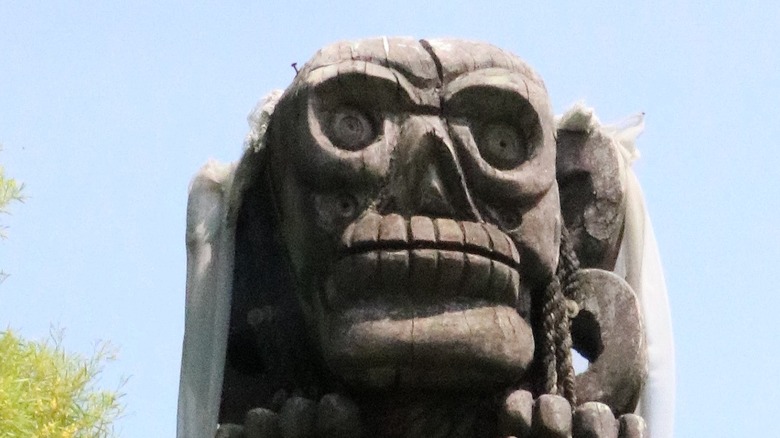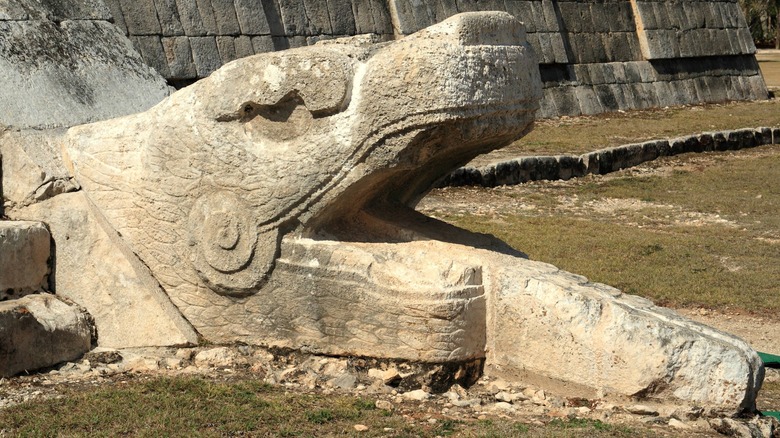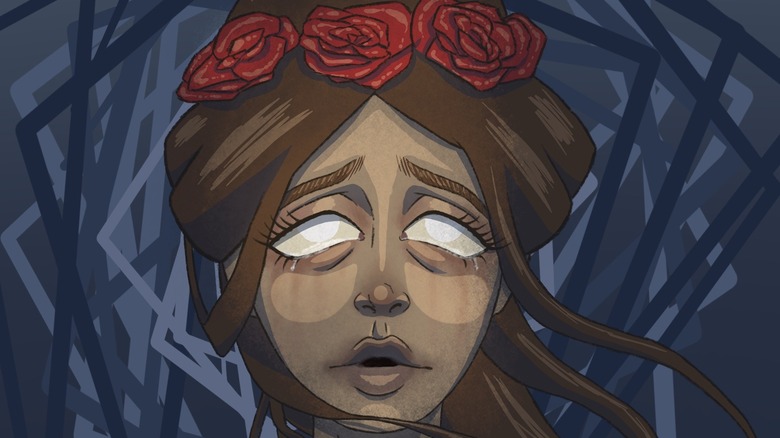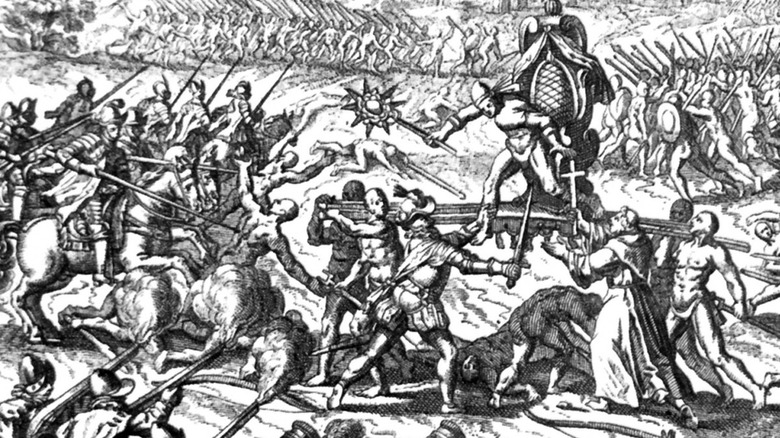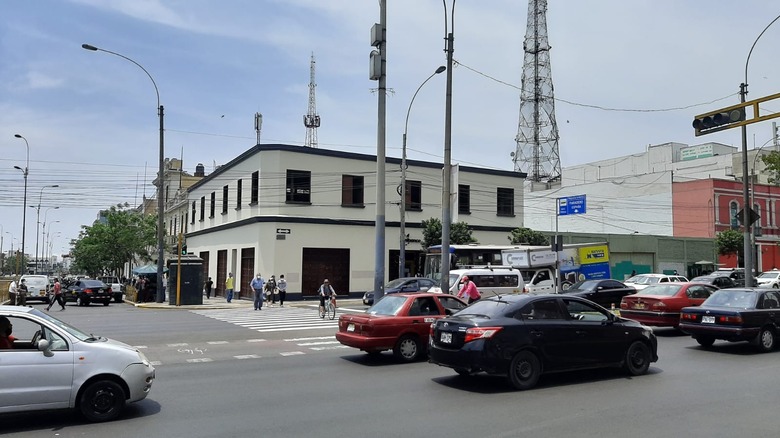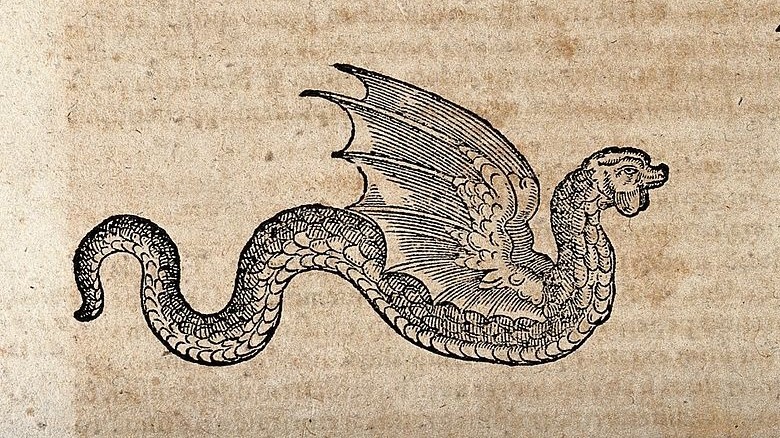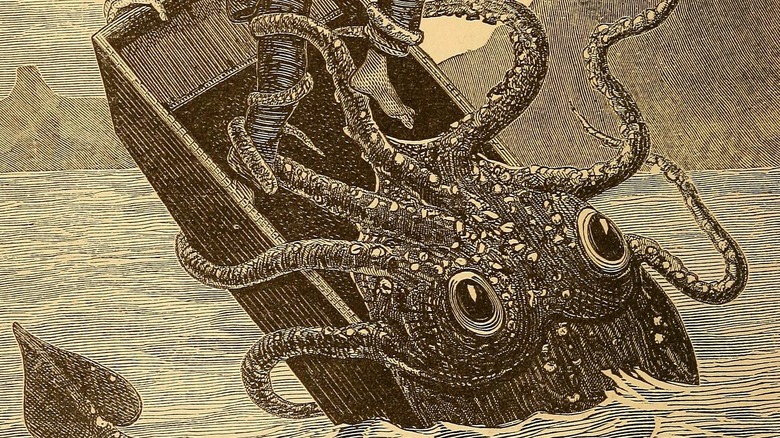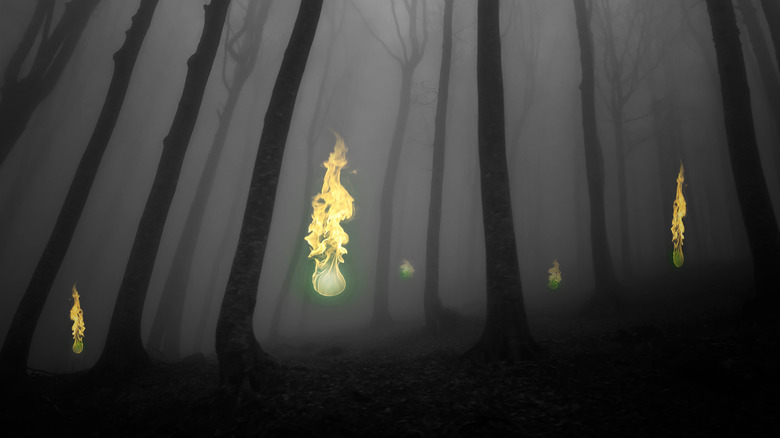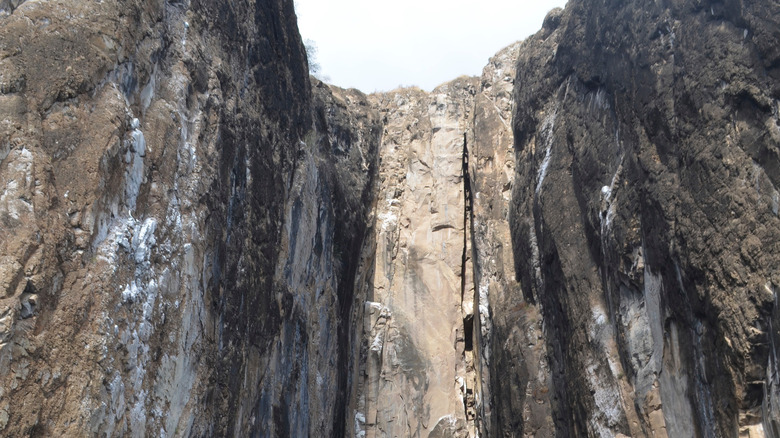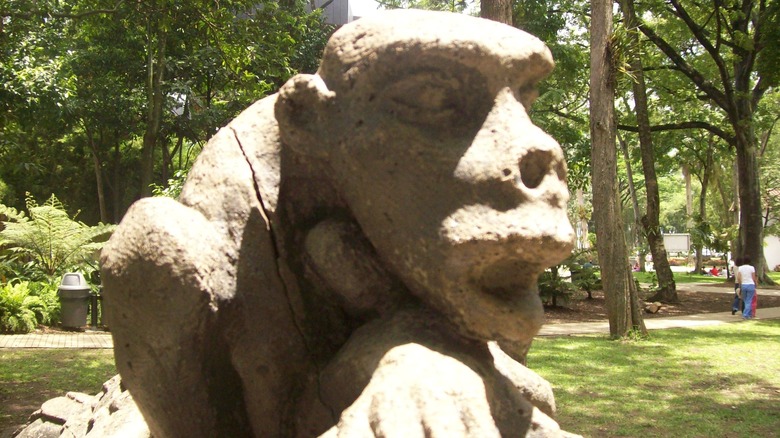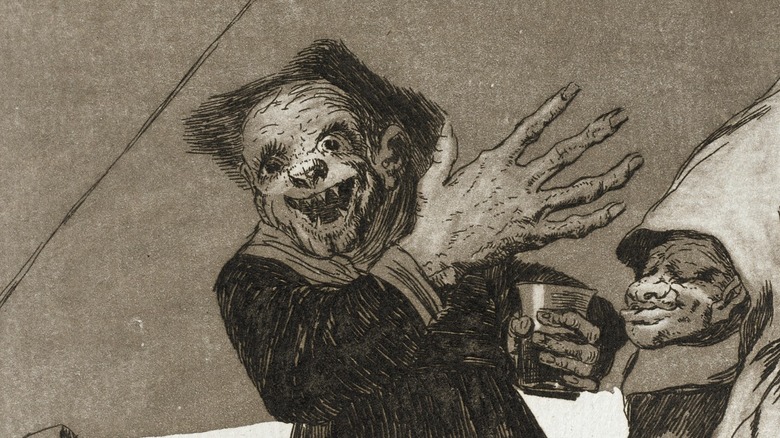Chilling Legends Of South America That Will Keep You Up At Night
The intense geography and environment of South America can already make it seem like a pretty forbidding place. With massive rainforests and huge rivers hiding all sorts of exotic wildlife (per Britannica), dangerous situations can be encountered nearly at every turn, from venomous predators to catastrophic floods. After years of extremely violent and tragic conquest by the Europeans were added into the mix, the countries that formed on the continent afterward were deeply affected by these grim events as well.
So, as the fusion of cultures developed over time, new legends and myths were born as hybrids of the ancient native beliefs along with those of the newcomers. It may then come as no surprise that the most frightening aspects of this mixed folklore are a reflection of the darkest moments of Latin America's volatile past. There are many tales of monsters, ghosts, and other spooky terrors of the night, yet these are the ones most likely to be etched in one's memory when alone in the South American darkness.
Yacumama
For some, snakes are among the most terrifying creatures on the planet, and the ancient Amazonian legend that describes a truly gargantuan serpent just raises that terror to a whole new level. The myths of the Yacumama speak of a horned snake that may have been as large as 160 feet long, which was so huge that it was known in the Peruvian basin as the "mother of water," according to The Guardian. With a head six feet wide, humans and other big prey stood absolutely no chance against the aquatic giant that, due to its size, could alter smaller tributaries, smash down trees, or even blast out powerful jets of water.
Even scarier is the possibility that the tales of the Yacumama could be based on a real species of great anaconda, that once horrified the native peoples along the great Amazon River. Experts have never confirmed such claims, but there have been accounts of snakes larger than official records, such as the 62-foot reptile that explorer Major Percy H. Fawcett claimed he saw in 1906, says Salem-News.com.
The vast region of the river basin is one of, if not the, largest in the world, spanning almost the entire length of northern South America — from Peru in the west to the coasts of Brazil — which is a lot of territory for outlandish creatures to inhabit. And since the Yacumama was not the only gigantic serpent in the native mythology of peoples as far north as Mesoamerica, behemoth snakes of some kind or another seem to have been encountered at some point in the past.
La Llorona
Of all the scary legends in Latin America, few cause as much dread as the tale of La Llorona. The story goes that a mother was absolutely devastated when her husband abandoned her for another woman. Her grief then became so great that it caused her to lose her mind and commit the unthinkable; the murder of their children. The most common version says she did so by drowning them, however another variation has her carry out the horrible act in a more brutal manner with a blade, says History Today. Afterwards, she saw no other path than to take her own life too.
The evil nature of her actions caused the poor woman to be transformed into a malevolent spirit known as La Llorona, or "the wailing woman," who wanders alone in the darkness of night, endlessly weeping over the deaths of her children. Adding another layer to the ghost's supernatural aura is the strong connections to deadly, primeval goddesses of the Aztecs, such as the "snake-woman," Ciuacoatl.
Although the horrifying, yet tragic legend originated in Mexico, it continued to spread throughout Hispanic communities to the north and south, reaching as far as Colombia and Venezuela, according to the Library of Congress. In these countries today, the scary tale has become quite useful for parents trying to get their own kids to behave, because if they do not, there is the threat that La Llorona will come and make them her next victims.
If you or anyone you know is having suicidal thoughts, please call the National Suicide Prevention Lifeline by dialing 988 or by calling 1-800-273-TALK (8255).
Pishtaco
One of the most horrific legendary monsters of South America is the Pishtaco. These vampiric creatures of Peru, Ecuador, and Bolivia do not feast on blood, but instead have the more grotesque nature of consuming the fat of their victims. Even worse, the supernatural predators always receive help from mortals to carry out the tortuous murders for their next meal.
The roots of the Pishtaco are tragically linked to the brutal invasion of the Spanish conquistadors, in which the native Quechua were genuinely terrified that they would not only be slaughtered, but also have their fat drained from them. As early as 1571, the people of Cuzco believed that priest Cristóbal de Molina was one of the vampiric beasts, and in the following centuries, the intense fear remained, says Atlas Obscura. Wealthy mine owners and merchants were also believed to be Pishtacos, who nefariously used human fat in their industries.
In recent times, people have continued to blame the vampires for murders carried out by real serial killers, such as the slaughter of 60 individuals discovered in 2009 whose fat was extracted. Here too, locals believed legendary monsters must be responsible, instead of acknowledging that their fellow human beings were capable of these horrendous crimes.
La Casa Matusita
In the Peruvian capital city, Lima, there is an ominous residence that has, over many years, become clouded in increasing notoriety. The urban legends begin over 250 years earlier when the site was supposedly the home of a Persian sorceress, whose benign attempts to cure diseases resulted in her being executed by the Holy Inquisition for witchcraft in the 18th century, according to infobae. From then on, the stories only became grimmer the following century as the building was allegedly the scene of several horrific events, such as a deranged slaughter brought on by hallucinogenic drugs, brutal dismemberment, and the massacre of an entire family by its patriarch.
In 1924, the Andrade Fernández family purchased the haunted structure and turned the ground level into a hardware store, leaving the second floor unoccupied. Since then, some visitors have claimed to hear strange sounds from above, but the grandson of the original owner, Ladislao Tery Andrade, believes all the paranormal connections are nonsense.
When interviewed on the show "Cuarto Poder," the current manager of the property explained his theory: A group of kids saw an older worker in the window on the second floor late one night and mistook him for a ghost (via RPP Noticias). The rumors rapidly spread from there and went wild with all sorts of gruesome embellishments. Nonetheless, Andrade's more plausible explanation is still open-ended, since records backing up any of the most extreme tales have never been found.
Huallepen
In the mythology of Chile, there exists a creature called the Huallepen that is not so frightening because of its aggressive behavior or predatory instincts — like other monsters of South America — but rather due to its grotesque appearance. While the chimeric beast had the head of a calf, its body more resembled that of a sheep, but with twisted, deformed limbs.
Fortunately, the monster has no interest in humans, yet that does not mean it is incapable of causing great harm. In her book, "Giants, Monsters, and Dragons: An Encyclopedia of Folklore, Legend, and Myth," Carol Rose reveals that the Huallepen have the supernatural trait of causing pregnant women to birth infants with the same deformity of twisted legs, by simply making the disastrous mistake of setting eyes on the abnormal animal. To avoid such a tragedy from occurring, the best way would be for expecting mothers to steer clear of the monster's habitat, near remote bodies of water.
Peuchen
Hailing from the region of modern-day Argentina and Chile, the Peuchen is another serpentine monstrosity of South American folklore that had its origins among the native Chilote and Mapuche people. The creature is described as being approximately twice as large as a human, but that is far from its most frightening feature. With broad wings, the giant snake could terrorize victims from the sky, along with using its powerful ability to paralyze prey simply with its gaze.
The nightmare did not end there, for once the vampiric beast had a living being within its grasp, it was so entirely drained of its blood that the corpses became dried out, says Paula Hammond in her book, "Fantastic Fearsome Beasts: Scary Monsters of Myths and Legends." According to the indigenous tales, the Peuchen has been a terror throughout the region stretching back into the ancient past, but even as recently as 1916, the fearsome animal was written about as if it was real in the Spanish-Mapuche dictionary of Father Felix de Augusta.
Bacoo
In both of the South American countries of Guyana and Suriname, along with communities spread throughout the Caribbean, there is a legend that a dark entity was brought over from the Old World. Tales of the Bacoo, or Bakru, speak of a demonic spirit that will provide great wealth, but at the terrible price of losing a loved one either to possession, or permanently through death. Once the Bacoo has taken control over the mind and body of a victim, the minor signs are the person appearing increasingly agitated, unable to sit still, and swearing profusely. In the worst cases, the possessed then becomes extremely violent and destructive towards property and other people.
Over the centuries, the Bacoo has appeared to people in various forms, yet the demons are often small in stature and described as looking like a child, dwarf, or puppet, according to the New West Indian Guide. In possibly its most frightening manifestation, the malevolent being can take on the astral features of a ghost, or even become completely invisible to the naked eye.
After someone has made the horrid mistake of connecting to the Bacoo, the diabolical spirit is notoriously difficult to get rid of. On the other hand, one proven method has been to trap the creature in a bottle or box — and trick an unsuspecting person into accepting the cursed item as a gift.
Cuero
The Cuero is a Lovecraftian-style monster from Chilean folklore that is described as a broad, flat, aquatic beast with lethal tentacles, having claws and eyes attached to the end of each appendage. The disturbing appearance of the creatures was not the only aspect of its dreadful mystique, for when it moved from its watery habitat onto land and then back, the movement would bring on dangerously powerful winds.
Even scarier is the sinister way the predatory beast would hunt by lurking underwater and snatching humans to drag them below the surface. The helpless prey would then face a nightmarish end as the creature would wrap its body around its new snack and devour it whole.
Among the legendary life forms in South American mythology, the Cuero might have the most bizarre origin story of them all. In her book, "Giants, Monsters, and Dragons: An Encyclopedia of Folklore, Legend, and Myth," Carol Rose explains that the locals believed a donkey hide had accidentally dropped into a river with chilling results: Possibly through some sort of dark magic, the skin transformed into a living thing that consumed whatever made the mistake of crossing its path.
La Luz Mala
La Luz Mala, or "the bad lights," are a malevolent entity that spark dread into the hearts of those living in the Uruguayan countryside. The legend of these sinister illuminations began over a thousand years earlier in Europe, then was brought to the New World by colonists who believed they witnessed the same phenomenon, according to El Pais Uruguay. In all the tales, the light is described as both not far from the ground and quite bright, but the most chilling aspect is the speed at which it can move to chase victims. At other times, it remains completely motionless.
In the local folklore, La Luz Mala is a tragic spirit who could not make the journey into the afterlife, most commonly because they did not receive a Christian burial after death. Their sorrowful existence has turned them more malicious in nature, leading them to lure frightened people into dangerous environments, like swamps, so that they too may lose their lives.
La Gringa sin Cabeza
One of the more recent urban legends of South America originated on the Galapagos Islands of Ecuador during World War II. To deal with the threat posed by the Japanese navy in the Pacific Ocean, the U.S. government reached out to the Ecuadorians to request permission to build an air base in the archipelago. The plan was agreed and by 1943, the newly constructed military installation housed over 3,000 officers and civilian laborers, according to Galápagos Conservancy.
During this period, according to legend, a shocking event unrelated to the war occurred near the base, with awful consequences. The tragic tale centers around the girlfriend of one of the U.S. soldiers, both of whom were living at the base. After discovering her infidelity, the enraged soldier killed her by pushing her off a cliff, causing her decapitation, as described by Christopher Minster's "Viva Travel Guides Galapagos."
From then on, the headless ghost was said to haunt the installation, even after it was permanently closed in 1946 and all the American soldiers had left. In the following decades, several Ecuadorian servicemen who have been stationed there claimed to have seen the menacing phantom in the darkness of night. The most disturbing accounts say she attacks the soldiers when they are alone.
Madre Monte
Deep in the Colombian jungles of Caquetá, Amazonas, and Guainia, a powerful mythological being is said to exist known as Madre Monte, or "Mother Mountain." In the native folklore, the giant serves as the guardian of nature and is clothed in leaves with moss covering her face and the rest of her body, says The City Paper. According to legend, her connection to the life in the rainforest surrounding her is so deep that she feels pain when an animal perishes.
For the most part, it is said that Madre Monte means humans no harm. On the other hand, there are some exceptions who will always face the wrath of the godlike entity: Hunters, loggers, and illegal miners are her hated enemies, who she will never cease to terrorize. The ones that decide to cross her put themselves at great risk because of her frightening ability to bring forth devastating storms, or raise the rivers to cause even more destructive floods, as described by Colombia.com.
Duende
Centuries ago, when the Spanish and Portuguese conquered their way through Central and South America, the colonists brought with them the Old World legend of the Duende. Descriptions of these goblins from the Iberian Peninsula say that the creatures are three feet tall and wear animal hides, along with a traditional red hat, according to Owlcation. Since the Mayans also believed in a minuscule deity who wore a hat, the myths of both cultures merged to create a hybrid version of the complicated dwarves.
Neither purely evil nor good, the behavior of the Duende is unpredictable, for some will help those who are lost in the forest, while others will commit the terrifying act of kidnapping children. And some of the nastier goblins are guilty of other heinous crimes, like cutting off a kid's toe. The scariest part is that the tiny creatures are said to sometimes live in the bedroom walls, so one never knows for sure a Duende is lurking about.
